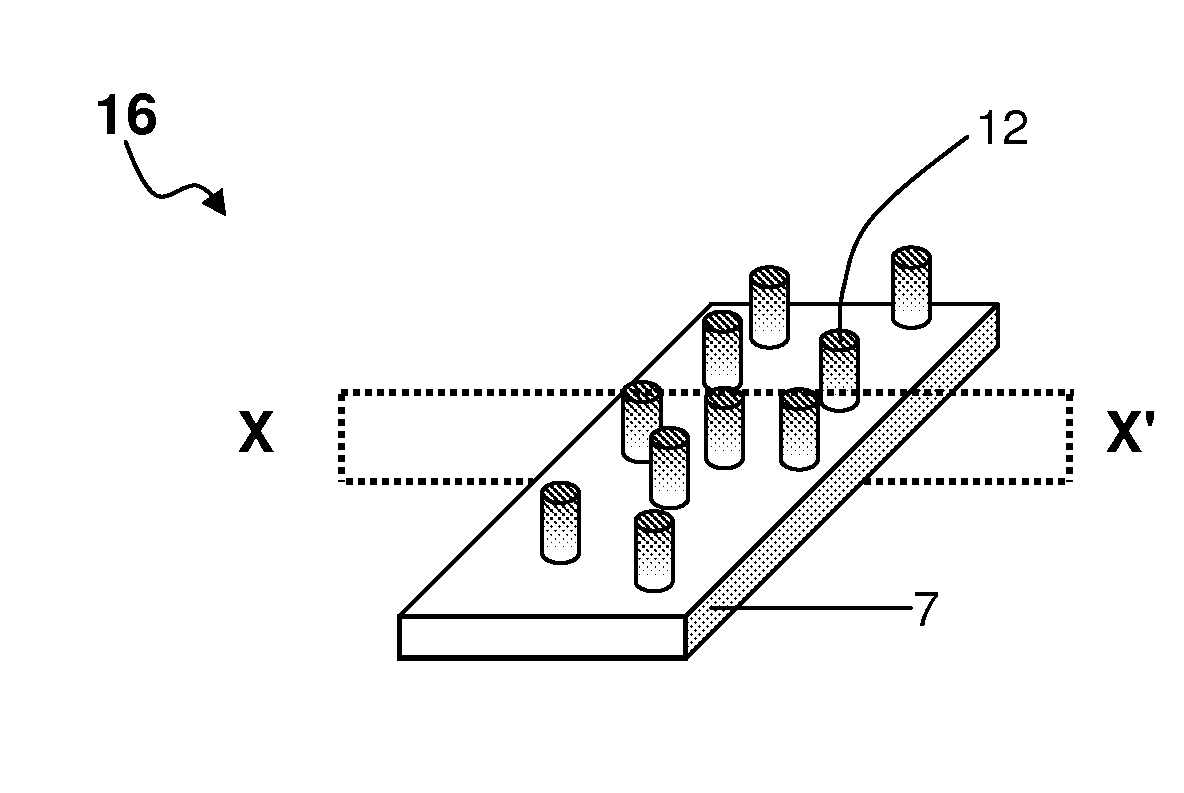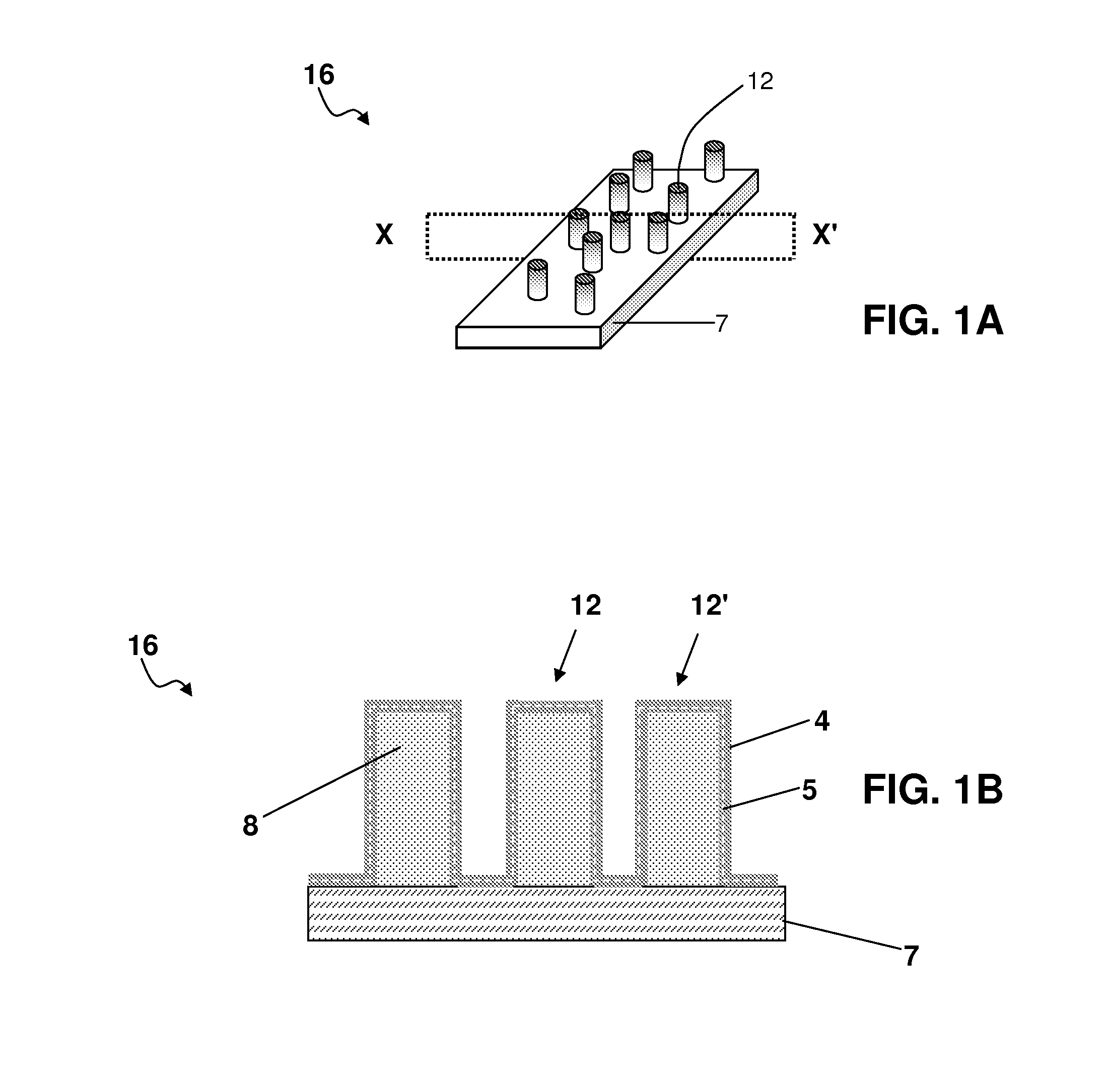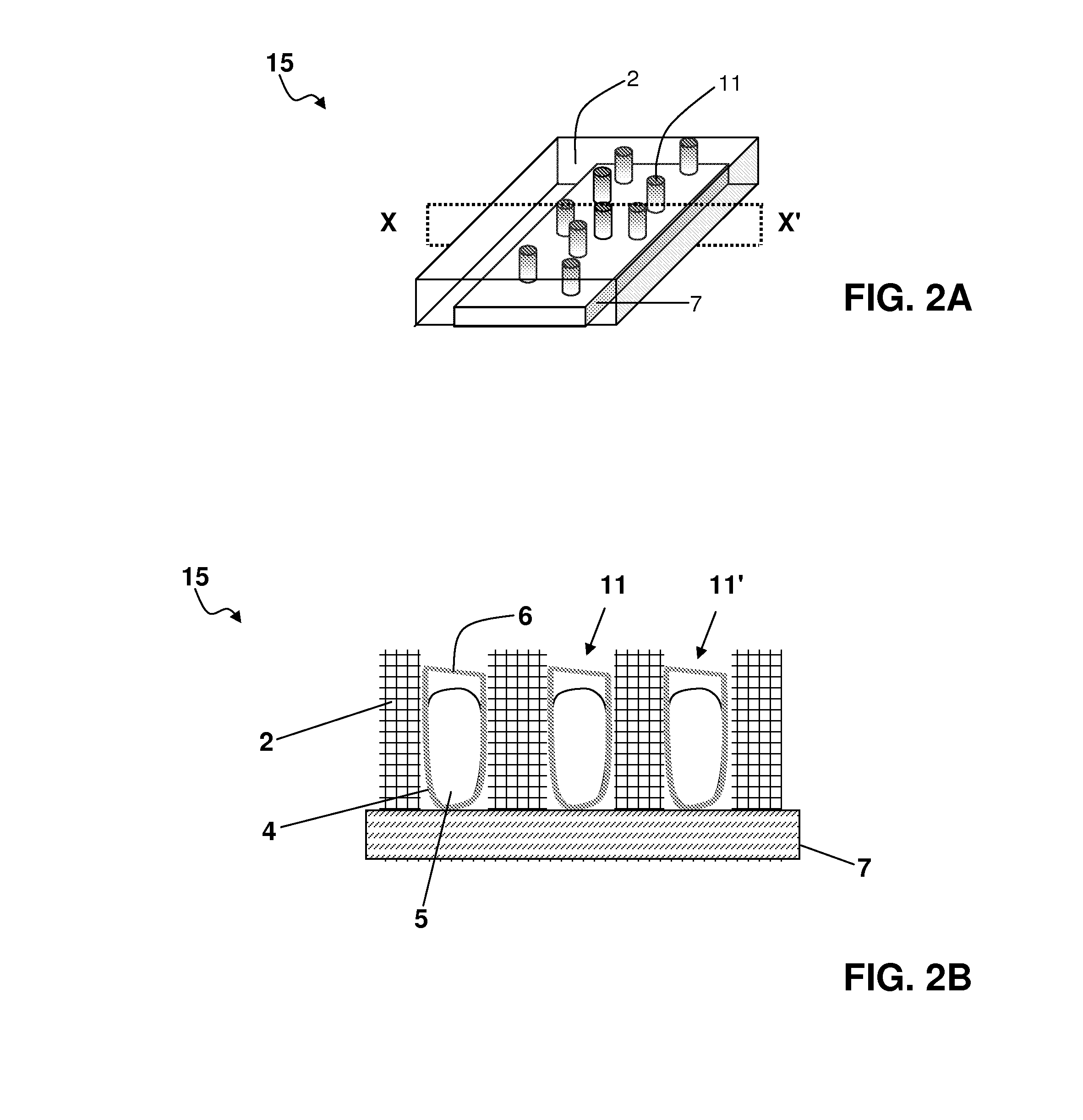Drug-eluting nanowire array
a nanowire array and electrode technology, applied in the field of nanowire arrays and electrodes, can solve the problems of suboptimal neural electrode technology, harmful paralysis for several thousands of people, and efficient neural electrode use, so as to increase the electrical conductivity of polypyrrole, influence the electroactivity of the film, and increase the activity of conjugated polymer.
- Summary
- Abstract
- Description
- Claims
- Application Information
AI Technical Summary
Benefits of technology
Problems solved by technology
Method used
Image
Examples
examples
[0217]The invention is illustrated by the following non-limiting examples
1. Preparation of a Nanowire Array
[0218]A polymeric matrix of polycarbonate film was deposited onto an electrically conducting support of metallic gold. Cylindrical pores of nanoscale dimensions were formed in the polycarbonate by a process of track-etching. The density and diameter of pores varied depending on the experimental conditions.
[0219]Next, electrically conducting protrusions of platinum were formed in the pores of the polycarbonate film by an electroplating process. The sample was placed in an electroplating bath disposed with three electrodes. The aqueous electroplating solution comprised 0.01 M Na2PtCl6.6H2O and 0.5M H2SO4. The polycarbonate film, metallised on one side with metallic gold, was used as the working electrode. The counter-electrode was a platinum electrode, and the reference electrode was an Ag / AgCl electrode. Electroplating of platinum was performed by chronoamperometry at room tempe...
PUM
 Login to View More
Login to View More Abstract
Description
Claims
Application Information
 Login to View More
Login to View More - R&D
- Intellectual Property
- Life Sciences
- Materials
- Tech Scout
- Unparalleled Data Quality
- Higher Quality Content
- 60% Fewer Hallucinations
Browse by: Latest US Patents, China's latest patents, Technical Efficacy Thesaurus, Application Domain, Technology Topic, Popular Technical Reports.
© 2025 PatSnap. All rights reserved.Legal|Privacy policy|Modern Slavery Act Transparency Statement|Sitemap|About US| Contact US: help@patsnap.com



